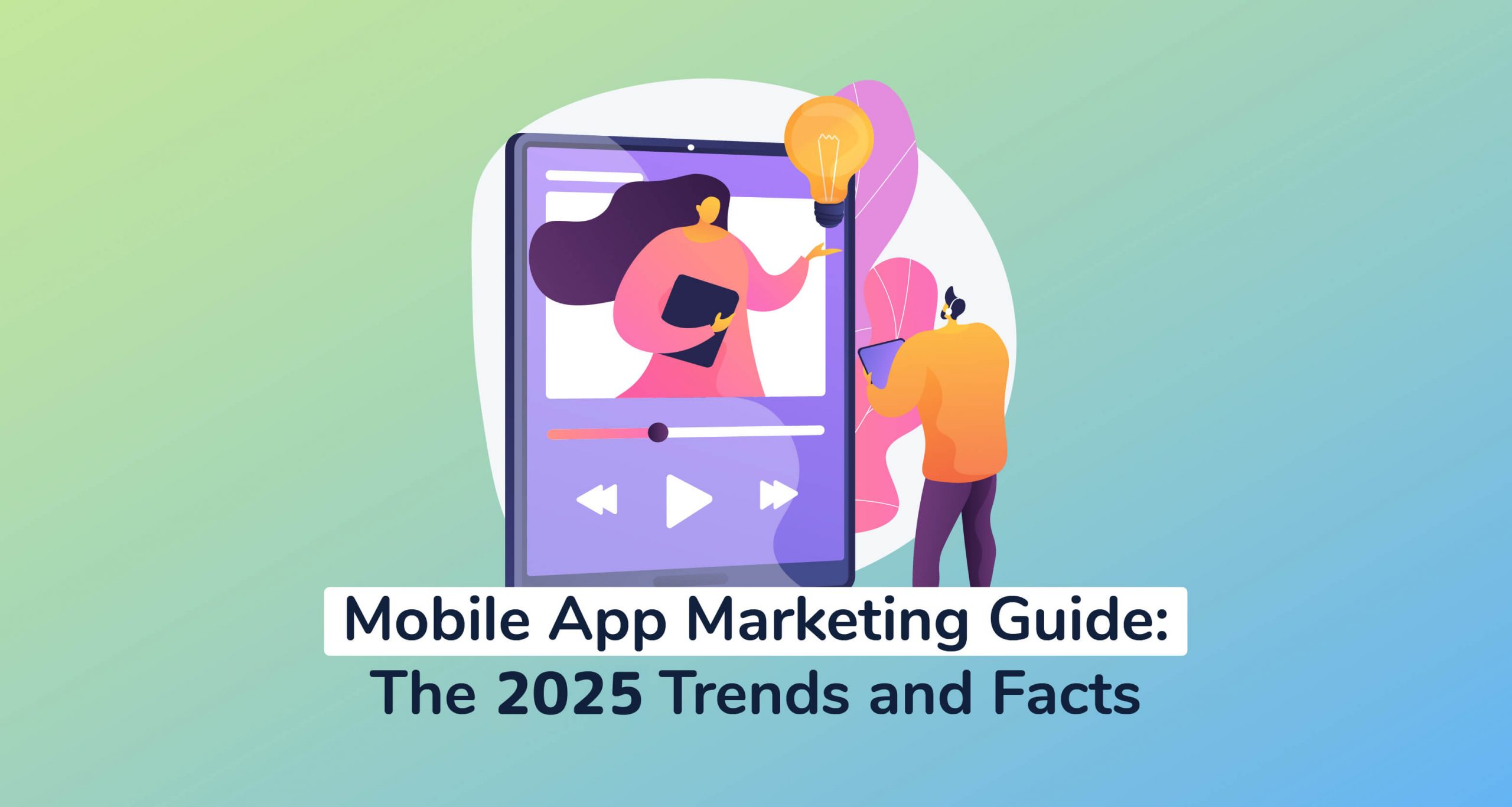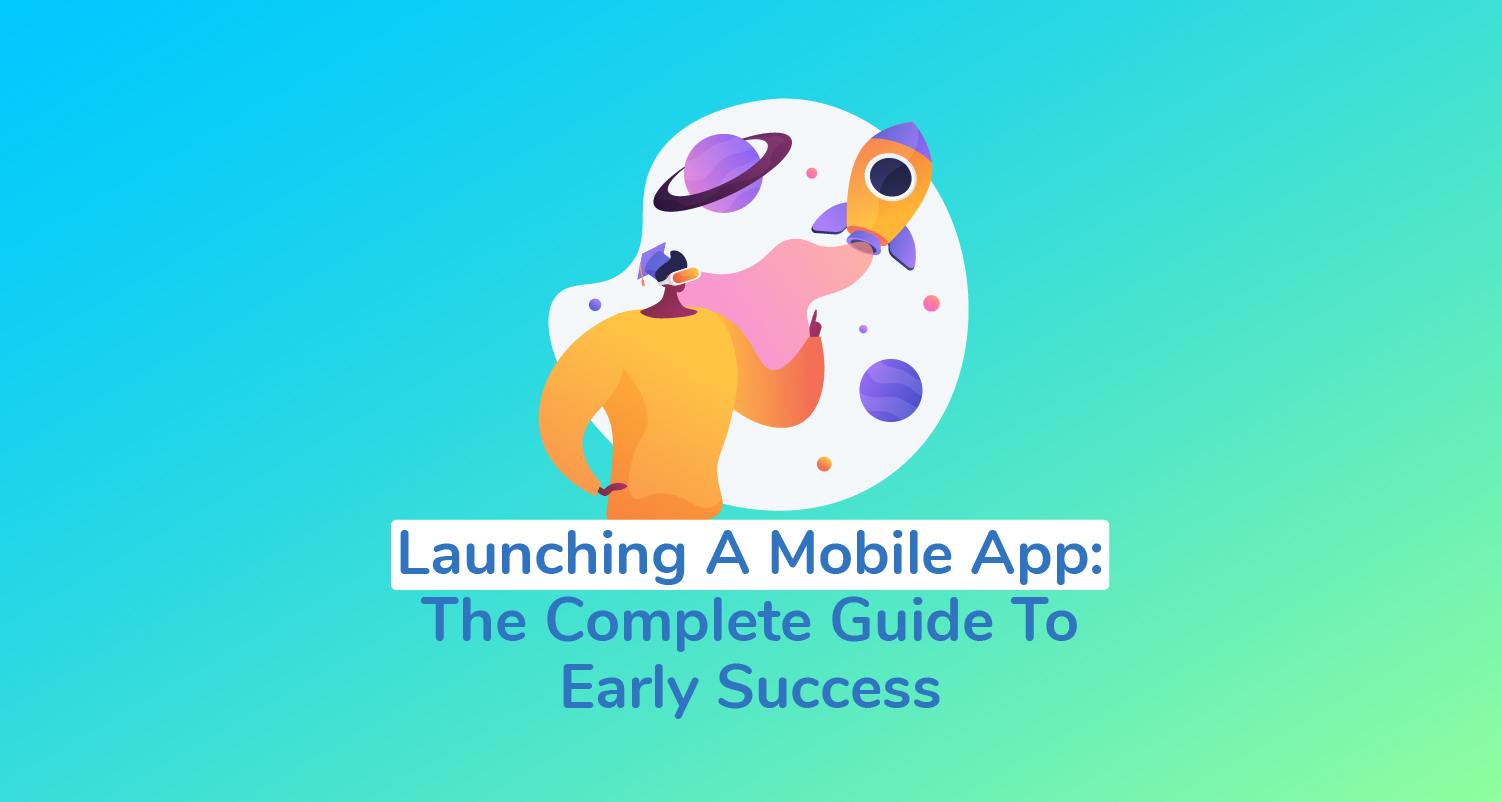
How To Promote Your App On Social Media In 2025
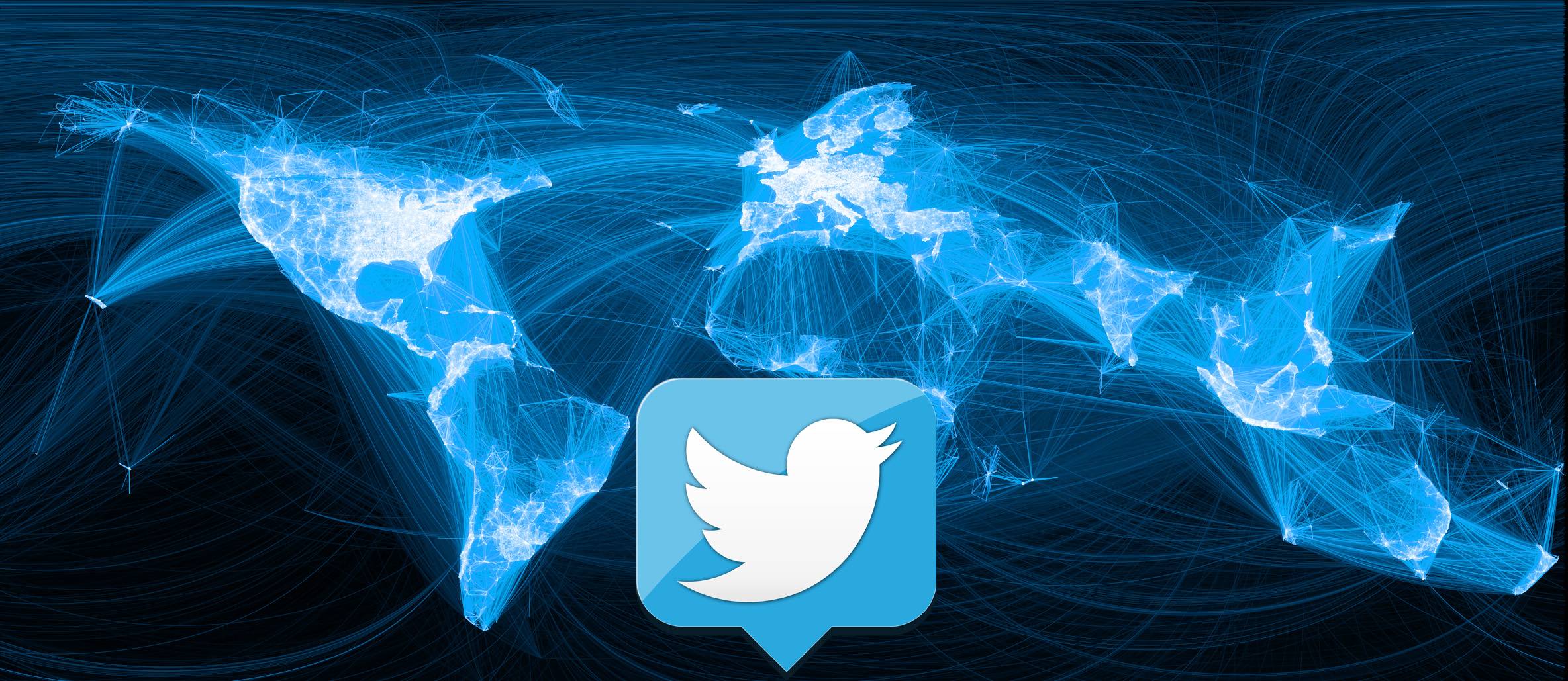
Table of Contents
- The Best Social Media Platforms For Your Mobile App Promotions
- The Ultimate Social Media App Promotion Guide – 8 Steps To Take
- Create Social Media Pages That Represent Your Mobile App Brand
- Learn The Social Media Etiquette
- Build A Loyal Following
- Take Advantage Of Paid Ads
- Leverage Influencer Marketing
- Capitalize On User-Generated Content
- Promote Your Best App Reviews and Ratings
- Prioritize Images And Videos
Yes, of course, App Store Optimization is still the king of mobile app promotions. But, make no mistake about it – if you intend to grow your mobile app installs exponentially in 2021, you’ve got to push your marketing campaigns beyond the App Store and Google Play Store.
You see, although it’s been proven over and over again that most smartphone users discover new apps through app store searches and top list features, the fact of the matter is, the competition is getting tougher for mobile app marketers and publishers.
As per Statista, by the fourth quarter of 2020, there were more than 3.1 million mobile apps in the Google Play Store and over 2.1 million in the Apple App Store. So, there’s no question about it – to outdo such a huge number of rivals, you’ve got to find ways to capitalize on other leading app discovery channels.
Now, that’s precisely where social media app promotions come in. As the next most popular app discovery channel after the app store and family/friend recommendations, it’s only logical to supplement your ASO with social media promotions.
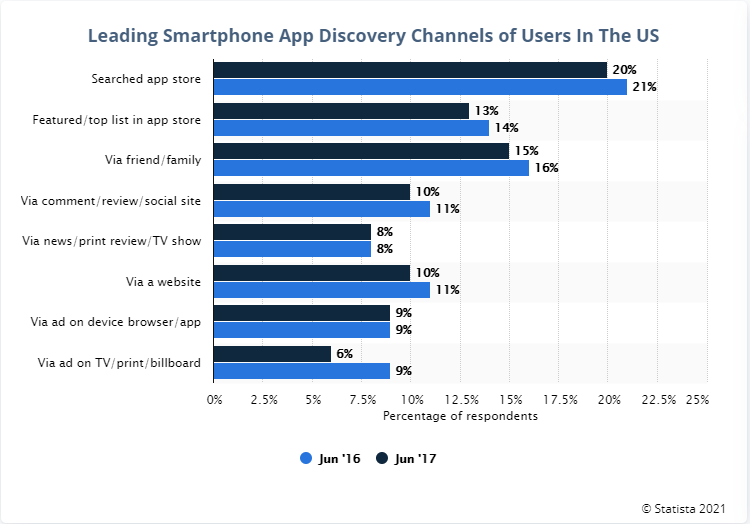
And no, we’re not talking about just creating business pages on social platforms and then following them up with random sponsored ads. On the contrary, the best social media app promotions require a lot of strategic planning and finesse.
That’s precisely what I’ll be walking you through in this post. By the end of it, you should have figured out:
- The best social media platforms for promoting your mobile app in 2021.
- How to plan your social media app promotions.
- 8 proven and tried strategies for promoting your mobile app on social media.
- How to increase your mobile app downloads via social media ads.
- How to tweak your mobile app marketing campaigns for each social media platform.
- Where each social media platform fits into your mobile app marketing strategy.
- How to channel your social media target audiences to your app store page.
The Best Social Media Platforms For Your Mobile App Promotions
Before we even dive into the mobile app promotion strategies, let’s address the elephant in the room. Which social media platforms should mobile app marketers prioritize?
Well, based on the thousands of mobile apps we’ve successfully marketed here at PreApps, I can tell you this – while it’s advisable to have a presence in as many social media platforms as possible, your app promotions should primarily be centered around:
And if you still have the bandwidth for additional channels, you could include the likes of YouTube, TikTok, and Snapchat.
#1. Facebook
Facebook has always featured prominently in our mobile app marketing campaigns because of its dominance, extensive reach, and social promotion features.
For starters, the site currently boasts 2.74 billion active users per month, making it the biggest social media platform. Overall, Facebook manages to reach about 59% of the world’s social networking population. It’s literally the only social site that hosts over half of all social media users.
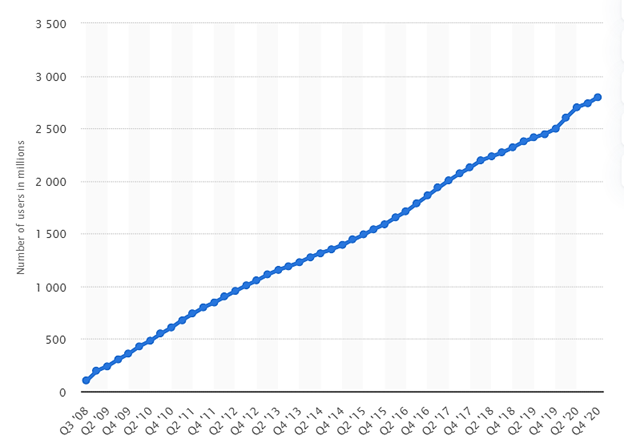
Now, when it comes to marketing, Facebook alone has amassed an advertising audience of 2.14 billion people. And yes – they happen to be adequately responsive too. An average user on Facebook currently clicks on 12 ads per month.
Then get this – while 1.7% of the users access the platform entirely via PC, 79.9% of Facebook users are always surfing the site on their mobile phones. That gives you a wide target audience that could easily click on your ads to download the app straightaway.
In terms of usage, I’d say Facebook is built to help you with community building. App developers and marketers can conveniently use its tools to:
- Gradually attract loyal followers through organic interactions and paid ads.
- Engage target audiences in communities through groups.
- Roll out contests, plus marketing events and promotions.
- Connect with target audiences through text and multimedia posts.
- Run special targeted mobile app ads.
- Encourage mobile app users to rate and review the apps.
#2. Twitter
With about 330 million active users per month, there’s no denying that Twitter isn’t as big as Facebook.
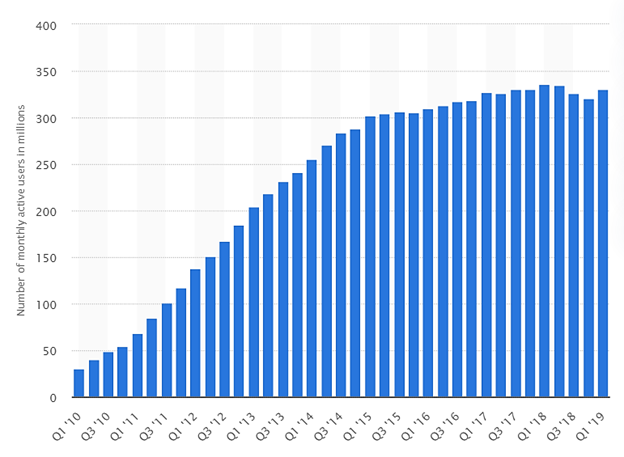
Don’t let that fool you, though. While Facebook allows you to reach a wider audience, Twitter is the mother of engagement.
Consider this, for instance. Time spent interacting with ads (including mobile app promotions) is 26% higher on Twitter compared to other dominant social platforms.
And get this. They don’t just view the ads. Research shows that Twitter followers are more likely to take action (ie download your app, give it reviews, etc) on information shared via Twitter than on any other channel. 54% of users surveyed by Twitter acknowledged that they had indeed proceeded to take action immediately after seeing a brand mentioned in tweets.
What’s more, it just so happens that Twitter users are 53% more likely to be the first to buy new products. That means you stand to attract a higher rate of mobile app installs from Twitter than any other social media platform.
Overall, Twitter is particularly ideal for driving mobile app installs, user acquisition, and customer service.
#3. Instagram
Although Facebook and Twitter have done a good job integrating media into their posts, they are still yet to catch up with Instagram’s visuals. This is one social platform that’s uniquely optimized to give you the best possible media interactions.
As such, you can rely on Instagram when it comes to:
- Visual app promotions such as app demo videos and screenshots.
- Giveaways and contests
- Feature explanations
- How-to videos.
The Ultimate Social Media App Promotion Guide – 8 Steps To Take
#1. Create Social Media Pages That Represent Your Mobile App Brand
First off, your social media pages have to perfectly embody your mobile app. Set yourself up for success with a clear and relevant profile picture, a straightforward page title/handle that your followers will easily find, plus a profile bio that explains your mobile app and who is behind it.
You can refer to your App Store or Google Play Store page for inspiration. But, don’t copy the content word for word. Instead, you should focus on the value and purpose of the mobile app, without going overboard or overselling the app.
According to Bruce Philp, CEO of GWP Brand Engineering, “Great executive tweeters don’t try to sell to their followers, they try to engage them in a personal way.”
In other words, make sure your profile pages and content are relatable and human.
#2. Learn The Social Media Etiquette
Remember, don’t mistake social media users for App Store users. People fundamentally come here to socialize and discover new interesting stuff.
So, instead of giving them a hard sell, you should try to build interest by publishing alluring content that entertains, informs, and educates your audience. Use content that creatively highlights their problems while, at the same time, demonstrating how your mobile app solves the issues.
If you’re promoting a photo editing app, for example, you could try to keep your audience engaged with fresh photography tips while showcasing our app’s editing capabilities.
If your followers like what they see, they will be sure to download your mobile app and, even better, share or retweet what you have to say. That being said, make sure you keep the conversation flowing. It’s good social media etiquette to reply to all users who ask questions.
Use tools like Tweetdeck to ensure you’re not ignoring any of your followers. Additionally, you might want to promote friends, followers, and other mobile apps that you find interesting along the way (perhaps karma will have them promoting you back).
Another trick is to come up with catchy and memorable hashtags that reflect your brand and mobile app. With time, you’ll notice that prospects will have a much easier time searching for your app across social media and the App Store.
#3. Build A Loyal Following
When it comes to tweeting and posting on social media, you need to forget what your mom told you about strangers – and, instead, focus on creating a community of followers that are interested in your mobile app.
Now, of course, this requires you to reach out and connect with random strangers. This is where you use Facebook groups and Twitter Search to find communities of social media users that would appreciate your mobile app.
You should also take advantage of #followfridays plus other fun hashtags to gain followers. And if you have the money to spend, it’s probably a good idea to invest in promoted accounts, as well as Facebook Messenger chatbots.
With Twitter’s promoted account, for instance, you get to filter audiences by zeroing in on the people that would be most interested in your app. Then as your tweets grow in engagement, Twitter will publish them in your prospects’ newsfeed while, at the same time, featuring your handle on their “who to follow” tab.
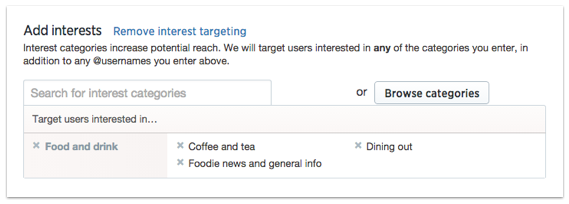
#4. Take Advantage of Paid Ads
Organic mobile app marketing is great. But, let’s face it – it takes time to organically build a solid following of warm prospects. As such, you might want to dig into your pockets and supplement those efforts with sponsored social media ads.
According to a survey by Google and Ipsos, social media ads account for 49% of the app downloads that are triggered by paid ads. It happens to be the second most effective paid ad channel after search ads on the App Store, Google Play Store, and search engines.

Now, for the best possible results here, you should consider using app install cards in your sponsored promotions. These are special media-rich ad formats that visually showcase your app, as well as allow your target audience to download your mobile app without necessarily being redirected to the App Store.
On Twitter, for instance, you get to take advantage of its Business App Cards. Once you log into your Twitter Ads account, the App Card allows you to showcase your app directly within a tweet and have users preview an image, a rating, and a short description of your app right on their timeline.
Yes, that’s right – ad viewers will be able to download or open your app easily with just a single click. Then with the use of deep links, users can click on a link in your tweet and quickly be redirected to a specific page within your app.
Speaking of users, it’s critically important to set your mobile app ads to reach the right audience. That can be done by tweaking the audience settings to granular target interested smartphone users.
With Twitter’s App Cards, for example, you narrow in on a targeted audience of your choice based on device, operating system, and more.
In the end – the more granular your social media targeting, the less you’ll spend on your app promotions and the higher the subsequent volume of app installs will be.
#5. Leverage Influencer Marketing
While social media paid ads will help you reach out to the right target audience, your subsequent conversion rate might still be low because of something called trust. You see, prospective users are not usually quick to trust random paid ads on their social feeds.
The good thing is, you can work your way around that. The trick is to collaborate with parties that your target audience trust – and the best ones when it comes to that are social media influencers.
Personally, I’ve had the privilege of working with mega-influencers, macro-influencers, plus micro-influencers. And yes – I’ve seen just how much buzz they can create around mobile apps, owing to the fact that their followers consider them authentic people they can trust.
I guess that’s why 80% of marketers find influencer marketing effective, while 71% of them attest that influencer marketing produces better leads than other marketing channels.
Here’s a word of advice, though. Don’t rush it. Rather, take your time to find the most appropriate influencers in your business field. If you’re trying to promote a gaming app, for instance, you might want to connect with renowned gamers who are specialized in your specific gaming niche.
Then when you finally get yourself a great team of influencers, introduce them to your mobile app and be sure to walk them through all the cool features. The more they understand what it’s all about, the better they’ll be able to sell it to their followers.
As for the app promotion itself, you could go with sponsored content, or perhaps, have the influencers review your mobile app. Whichever you choose, ensure the content is engaging and demonstrates the value your app offers.
#6. Capitalize On User-Generated Content
Influencers are not the only social media affiliates you could use to market your mobile app. To keep the buzz alive, you should consider pairing them with your app users.
Think of this as some form of social proof. And the thing about social proof is, it’s incredibly effective – as 92% of consumers are more likely to trust non-paid recommendations than any other form of advertising. And while 70% of them are quick to trust even online recommendations from strangers, only 36% trust social media ads.
Well, of course, you could try sending polite requests to your app users through push notifications and in-app messages. But, as we all know, such approaches typically generate very low response rates.
Hence, you should, instead, consider building an in-app feature that allows users to generate content and then post it on social media. Alternatively, you could set up a contest or campaign trend that encourages users to post app-related content on their social feeds, plus maybe tag relevant hashtags.
Whichever you choose for your app promotion, just make sure that the content itself is not only engaging but also proceeds to highlight the app’s value.
One example of a mobile app that has greatly benefited from user-generated content is TikTok. By giving its users the privilege of creating and sharing trendy content, it managed to reach a large audience in a pretty short period of time. In fact, you could say user-generated content is the principal reason why TikTok ultimately went viral.
#7. Promote Your Best App Reviews and Ratings
Another clever way to provide social proof is by promoting your mobile app’s best reviews and ratings on social media.
You see, although mobile app users pay attention to the app screenshots and preview videos, the two things that most of them consider being extremely important right before hitting the download button are the app reviews and ratings. It turns out that more than 60% of App Store users keenly evaluate app reviews and ratings before proceeding with their downloads.
Don’t get me wrong, though. I’m not advising you to redirect your target audience to the reviews on your App Store page. Rather, you should find a way of bringing the best reviews right to their newsfeeds.
Thankfully, this shouldn’t be difficult at all with the current caliber of app promotion tools on social media sites. On Facebook and Twitter, for example, you’ll find that the app promotion cards are capable of directly integrating reviews and ratings from the Google Play Store and Apple App Store.
That way, it becomes easy for you to provide social proof and drive mobile app downloads.
Then for the best possible results, you might want to identify and highlight the most outstanding app reviews. Share them on your social media pages to give prospects an idea of what others think of your mobile app.
In case you happen to receive a negative review, you should quickly provide a valid response as you find a way to resolve the problems. You can bet your prospects will notice the efforts.
#8. Prioritize Images And Videos
Generally, the average engagement rate on Facebook is just 0.18%, while Twitter averages at 0.5%.
Not very encouraging, I admit. But then again, it largely depends on the type of content you’re posting.
Here’s the thing. The current breed of social media users doesn’t like reading – unless, of course, it’s a meme. They’d rather spend their time scrolling through images and videos.
That’s why, for example, Facebook’s average engagement rate for video posts stands at 0.26%. Twitter, on the other hand, reports that tweets with videos get 10 times more engagement than those without – while tweets with images attract 150% more retweets, 89% more likes, and 18% more click-throughs than regular posts.
Therefore – if you’re seeking to boost your social media reach, you should reduce the amount of text in your app promotions and replace it with visual content.
Key Takeaways
Here are the main points again;
- By the fourth quarter of 2020, there were more than 3.1 million mobile apps in the Google Play Store and over 2.1 million in the Apple App Store.
- As the next most popular app discovery channel after the app store and family/friend recommendations, it’s only logical to supplement your ASO with social media promotions.
- Facebook is ideal for community building. App developers and marketers can conveniently use its tools to attract loyal followers through organic interactions, paid ads, and groups.
- Since Twitter users are likely to take action, the platform is particularly ideal for driving mobile app installs, user acquisition, and customer service.
- you can count on Instagram when it comes to visual app promotions such as app demo videos and screenshots.
- Start off your social media app promotion campaign with a page that perfectly embodies your mobile app and brand.
- Instead of giving social media users a hard sell, you should try to build interest by publishing alluring content that entertains, informs, and educates your audience
- Take advantage of #followfridays plus other fun hashtags to gain followers.
- Social media ads account for 49% of the app downloads that are triggered by paid ads.
- The more granular your social media targeting, the less you’ll spend on your app promotions and the higher the subsequent volume of app installs will be.
- 80% of marketers find influencer marketing effective, while 71% of them attest that influencer marketing produces better leads than other marketing channels.
- 92% of consumers are more likely to trust non-paid recommendations than any other form of advertising. And while 70% of them are quick to trust even online recommendations from strangers, only 36% trust social media ads
- More than 60% of App Store users keenly evaluate app reviews and ratings before proceeding with their downloads.
- Tweets with videos get 10 times more engagement than those without – while tweets with images attract 150% more retweets, 89% more likes, and 18% more click-throughs than regular posts.
Conclusion
Whichever social media platform you choose for your mobile app promotions, the tips we’ve covered here are bound to transform your entire marketing campaign.
Not entirely, though. The one thing that’ll be missing from your marketing strategy is expertise.
And no, I’m not talking about general digital marketing expertise. Rather, you could certainly use a seasoned mobile app marketer.
PreApps, for instance, has been around for about ten years now – within which we’ve helped mobile apps attract a combined volume of more than half a billion downloads. So, of course, you can count on us – we’ve been there, we’ve tried it all, and we know what works and what doesn’t.
Get in touch with us today, and let’s talk about turning not only your social media marketing around but also your entire mobile app marketing plan. You can start by letting us know the type of growth you’d want.
Newsletter
Don’t miss a thing! Sign up to receive daily news
Subscribe Newsletter



